Launch your career
into a new orbit
Advanced Certification Programme in Space Technologies
Notify Me


- India’s #1 University and
Research Institute* - 6 Months Executive Friendly
Programme - 157 Hours Live Interactive
Sessions - 3 Days Campus Visit
to IISc
*NIRF 2024
The Programme offers 3X Advantage
First of its kind

The only in-depth advanced certificate programme that covers a wide range of modules across Space Technology, Satellite and Navigation Systems, Propulsion and Mission design, among many others.
The Power of two

You get to learn directly through live interactive sessions from the esteemed faculty of IISc and distinguished scientists from ISRO and other Industry experts.
Distinctive Pedagogy

157 hours of Industry relevant curriculum covers hands-on experience with satellite data sets, case studies, assignments, mini projects and a visit to IISc Campus.
What will I learn?
You will learn from a dynamic faculty group of ISRO scientists and IISc Professors, all with academic and research credentials from esteemed educational institutions.
- Basics of the effect of gravity and other effects of space
- Simulating microgravity
- Simulating other aspects of space
- Lab-on-Chip systems
- Microfluidics and sensors
- Millifluidics
- Biological Payloads
- MANAS as a case study
- Making a microgravity simulator, habitats for space
- MARS case study
- In situ resource utilization (ISRU) for habitats
- Materials and design for space applications
- Case study on MANAS prototype
- Manufacturing technologies (focus on 3D printing)
- System design and manufacturing
- Case studies derived from prior NASA and ESA missions
- Introduction to various thermal management technologies
- Thermal management of orbiting spacecraft
- Thermal network analysis
- Introduction to Navigation: Basic forms of Navigation, Satellite Navigation, Inertial Navigation
- Introduction to GNSS Systems: Early Navigation Systems, Concept of GNSS Positioning, Modeling the Observations, Positioning Modes, Current GNSS Systems - GPS, GLONASS, Galileo, BeiDou, Regional Navigation Systems - QZSS, IRNSS/NavIC, SBAS Systems - WAAS, SDCM, EGNOS, MSAS, GAGAN GNSS for Science and Society at Large
- Time and Reference Systems: Dynamics Time, Atomic Time, Sidereal and Universal Time, Earth Rotation, GNSS System Times, Spatial Reference System, Celestial Reference System, Transformation between reference systems
- Satellite Orbits and Attitude, Signals and Modulation, Clocks, Atmospheric Signal Propagation
- Positioning and Navigation: Precise Positioning, Differential Positioning GNSS/INS Integration, Land & Mass Applications, Aviation Applications, Ground-based Augmentation Systems, Space Application
- Radar Fundamentals
- The concept, physics of EM waves interaction with matter, Monostatic and bistatic radars, Pulsed, continuous wave radars
- Radar equation
- Ambiguities
- Noise and Signal-to-Noise ratio
- Definition of RCS
- RCS of simple targets
- Scattering regimes
- Antennas, propagation, radar applications
- Antenna principles and designs
- Aperture antennas
- Sidelobes, antenna polarisation
- Propagation, reflections, refraction, diffraction, scattering
- Atmospheric and surface effects, Active and passive phased arrays
- Adaptive beamforming, DF and nulling
- Radar Hardware Case Studies
- FMCW Radar using SDR; Principles of passive radar
- Synthetic-aperture radar (SAR) fundamentals and Introduction to SAR processing
- SAR range equation
- Scatterometers
- SAR techniques and applications
- SAR Interferometry
- Remote Sensing Images: Multi-spectral and Hyper-spectral Images (HSI); Image Restoration
- Image Enhancement: Information Extraction
- Machine Learning (ML) Techniques: Neural Nets and Deep Learning; Convolution Neural Nets
- Dimensionality Reduction and Compression Technique of HSI
- ML applications for hyperspectral image processing
Am I Eligible for this programme?
The programme is ideal for those eager to leverage their engineering expertise or professional experience to explore new avenues in the emerging space sector.
Eligibility
- Education: B.E/B.Tech in any stream with a minimum of 50% marks
- Experience: Minimum 1 year of professional experience











